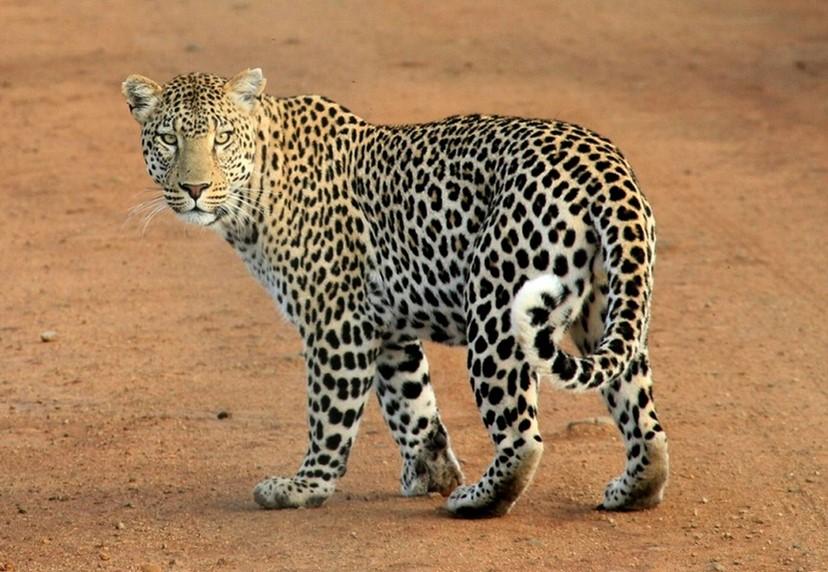When it comes to hunting leopards, shot placement can make or break your safari experience. Leopards are not only elusive but also extremely dangerous, especially when wounded. Understanding where to aim is crucial to ensure a successful and safe hunt.
Leopard hunting in Africa, particularly in Botswana, demands precision and preparation. Unlike ungulates, a leopard’s heart and lungs sit differently, requiring careful consideration when taking your shot. Typically, you’ll encounter the leopard near bait, often in a sitting position or reaching up, which affects their body alignment.
Using a minimum caliber of .375 with a 300-grain bullet is recommended for this dangerous game. An expanding bullet tip and a high-quality tactical scope can make all the difference. With the right knowledge and gear, we can approach this challenging hunt with confidence and respect for the animal.
[DYNAMIC-BLOGTABLEOFCONTENT]
Key Takeaways
- Shot Placement: Understanding the unique positioning of a leopard’s heart and lungs is crucial for effective and humane hunting. Aim for the heart-lung area to minimize risks and ensure a quick, clean kill.
- Essential Gear: Use a minimum caliber of .375 with a 300-grain bullet for leopard hunting. High-quality tactical scopes and expanding bullet tips improve accuracy and efficiency.
- Optimal Timing: Early mornings and late evenings are the best times for leopard hunting due to higher animal activity. Timing your hunt during these periods increases encounters with leopards.
- Local Expertise: Hiring professional hunters and local Bushmen trackers significantly enhances your chances of success. Their knowledge of the terrain and animal behavior is invaluable.
- Location Selection: Prime leopard hunting spots in Botswana include the Kalahari Desert, Okavango Delta, and Chobe National Park. Consider factors like population density, terrain, and hunting regulations when choosing your location.
- Preparation and Safety: Proper preparation, including packing a first-aid kit, GPS, and binoculars, is essential. Familiarize yourself with your firearm through practice to improve shot accuracy.
When we talk about the thrill of an African hunting safari, few experiences compare to the excitement of tracking big game through wild terrains. Whether you’re a seasoned hunter or a novice, game hunting safaris offer a unique blend of challenge and adventure. Let’s delve into the essential aspects of a successful safari, from understanding animal behavior to making the right preparations.
Introduction to Leopard Hunting
Africa’s vast landscapes and diverse wildlife make it a premier destination for game hunting safaris. From the rolling savannas to dense forests, every environment presents unique challenges and rewards. Big game hunts in Africa target some of the world’s most sought-after trophies, like lions, elephants, and buffalo. But there’s one animal that stands out for its combination of stealth, power, and sheer unpredictability—the leopard.
Understanding Animal Behavior
Knowing your quarry is crucial for any successful hunt. Leopards, for instance, are nocturnal and solitary creatures. They often move silently through their territory, making them hard to spot. Understanding their habits can significantly improve your chances of success. Leopards prefer dense bush and rocky outcrops, where they can ambush prey. Observing these patterns and using them to your advantage can be a game-changer.
The Importance of Location and Timing
Choosing the right location and timing is essential for a fruitful hunt. In areas like Botswana, waterholes and game trails are prime spots where animals congregate, especially during dry seasons. Timing your hunt during these periods increases your chances of encountering big game. Also, the early morning and late evening hours are typically when animals are most active. Aligning your hunt with these peak activity times can yield great results.
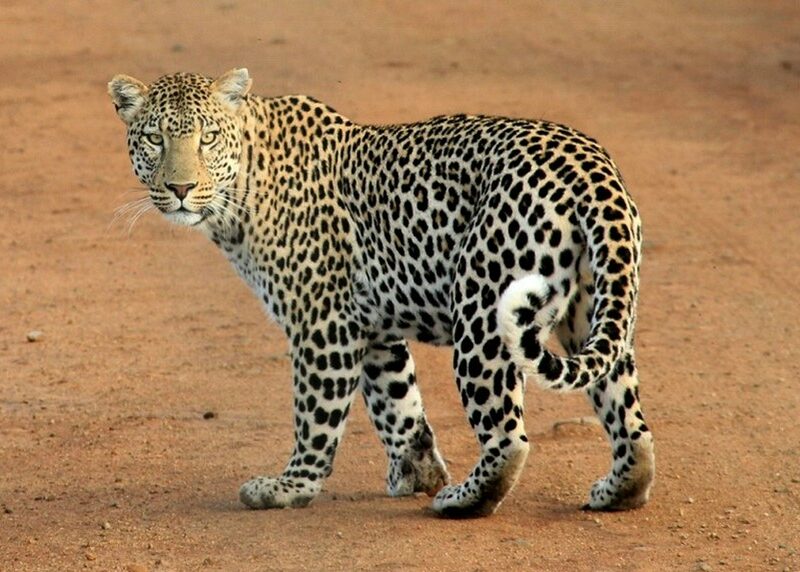
Gear and Preparation
Proper preparation can’t be overstated. The right gear makes a world of difference, especially in the challenging terrains of Africa.
Essential Firearms and Ammunition
For leopard hunting, a minimum caliber of .375 with a 300-grain bullet is recommended. An expanding bullet tip ensures effective shot placement. Your rifle should be fitted with an excellent-quality tactical scope to handle low-light conditions often encountered during an African hunt.
Pack Smart
What should be in your pack? Apart from your firearm and ammunition, always carry a first-aid kit, high-energy snacks, water, binoculars, and a reliable GPS device.
Working with Local Experts
Enlisting the help of professional guides and trackers maximizes your chances of success. Local experts have invaluable knowledge about the terrain and animal behavior.
The Bushmen Advantage
In Botswana, Bushmen trackers are renowned for their exceptional tracking skills. Their experience, honed over centuries, can lead you to fresh spoor and get you closer to your target.
The Role of Professional Hunters
Professional hunters (PHs) provide guidance on shot placement and ensure safety during dangerous game hunts. They’re often part of the safari package and are indispensable to a successful hunt.
Shot Placement and Technique
Making that first shot count is crucial. For leopards, aim for the heart-lung area. This increases the chance of a clean, humane kill and reduces the risk of having to track a wounded, dangerous animal.
Practice Makes Perfect
Before heading out, practice shooting from various positions. You may have to make shots from awkward angles or while seated. Familiarize yourself with your firearm’s performance to ensure accuracy.
Final Thoughts
Game hunting safaris offer a blend of excitement, challenge, and adventure that’s hard to match. By understanding animal behavior, choosing the right location and timing, preparing adequately, and working with local experts, you’re well on your way to a successful and memorable hunt. For more tips and detailed guides, visit Game Hunting Safaris.
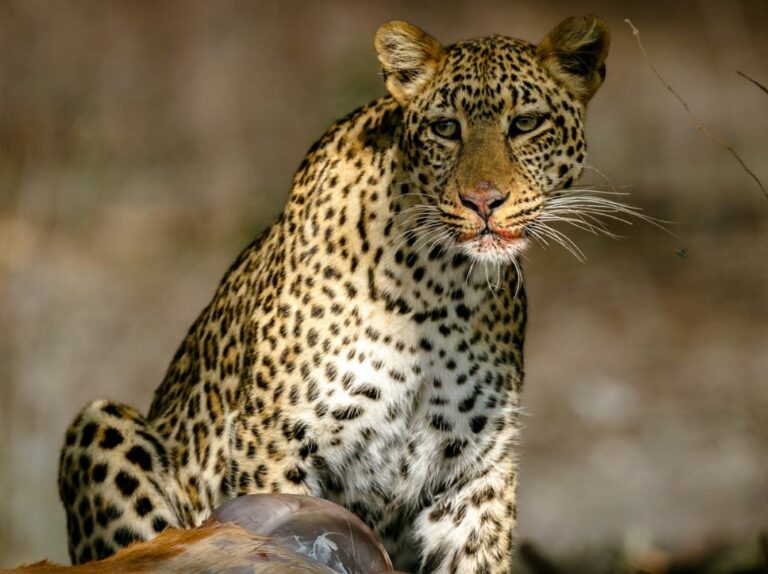
Key Locations for Leopard Hunting
Selecting the right location is crucial for a successful leopard hunt. Different factors influence the choice of hunting spots, including terrain, leopard population density, and hunting regulations.
Botswana’s Top Leopard Hunting Spots
Botswana stands out for its prime leopard hunting locations. The country’s diverse terrain and well-managed wildlife reserves make it an ideal destination for leopard hunting.
- Kalahari Desert: Known for its vast, arid landscape, the Kalahari Desert offers a unique hunting experience. The leopards here are elusive, making the hunt challenging and thrilling.
- Okavango Delta: This region is famed for its lush habitat. The dense vegetation provides excellent cover for leopards, making them harder to spot and adding to the excitement of the hunt.
- Chobe National Park: Renowned for its rich wildlife, Chobe National Park provides ample opportunities for spotting leopards. The park’s varied landscape, from riverbanks to woodlands, ensures diverse hunting scenarios.
Factors to Consider When Choosing a Location
Selecting the right location involves more than just picking a spot on the map. Various factors need to be considered to ensure a successful and enjoyable leopard hunting expedition.
- Leopard Population Density: Higher leopard populations increase your chances of encountering one. Research and local knowledge can help identify areas with abundant leopard activity.
- Terrain and Vegetation: Different landscapes require different hunting strategies. Open plains may offer clear shots, while dense forests might need careful tracking and patience.
- Accessibility: Some hunting areas are more accessible than others. Consider the ease of reaching the hunting grounds and the availability of necessary amenities.
- Regulations and Permits: Each hunting location has specific regulations and permit requirements. Ensure you comply with all local laws and obtain the necessary permissions before embarking on your hunt.
- Weather Conditions: Weather can significantly impact your hunting experience. Some locations might have better hunting conditions during certain times of the year. For example, Botswana’s hunting season runs from April to September, with the best time for leopard hunting recommended from July to September.
For more information on planning your next African hunting safari, visit Game Hunting Safaris.
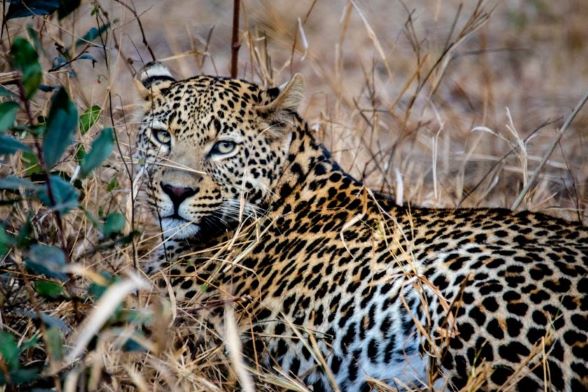
Optimal Shooting Techniques
Leopard hunting in Africa, particularly in Botswana, requires precision and understanding. Let’s discuss crucial techniques to ensure your shots count.
Understanding Leopard Anatomy
Shot placement is critical in leopard hunting. A leopard’s heart and lungs are situated further back, unlike ungulates. Hunters must study the anatomy to understand these vital organs’ positions. For instance, leopards have a soft body, making them susceptible to hydrostatic shock. Shots targeting the heart and lungs are best, avoiding headshots to preserve the trophy.
Best Times for a Successful Hunt
Timing is key for a successful leopard hunt. Early mornings and late afternoons offer the best opportunities, as leopards are most active during these times. The cool temperatures in Botswana during these periods make it easier to track them. For those planning an African hunting safari, leveraging these peak times increases the chances of spotting and successfully hunting leopards.
When it comes to Game Hunting Safaris, we’re delving into an exhilarating experience that merges adventure with sport. From tracking the impressive ‘Big Five’ to savoring Africa’s rich biodiversity, there’s much to uncover and appreciate. Let’s explore what makes a Game Hunting Safari a once-in-a-lifetime event.
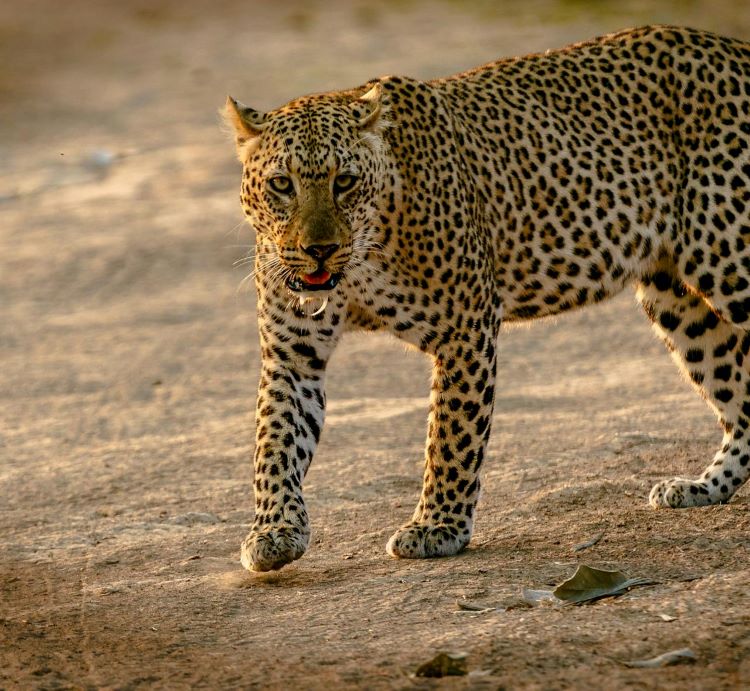
Ethical Considerations in Leopard Hunting
Africa offers diverse terrains and abundant wildlife, ideal for hunting. Famous regions like Botswana’s Okavango Delta and South Africa’s Kruger National Park stand out for their rich biodiversity and hunting opportunities. Pay attention to the regulations and permits required in these areas.
Botswana: The Wild Haven
Botswana’s Kalahari, Okavango Delta, and Chobe National Park present varied terrains perfect for an African hunting safari. These spots have dense leopard populations and other game, ensuring a fruitful hunt.
Example: The Okavango Delta, with its sprawling wetlands, offers great visibility of game movements.
South Africa: The Versatile Option
South Africa provides several Game Hunting Safari opportunities, given its landscapes and managed hunting zones. From plains filled with antelope to woodlands hiding elusive predators, there’s something for everyone.
Example: Private reserves like Timbavati allow controlled hunts, ensuring safety and species conservation.
Essential Gear for Game Hunting
Having the right gear is crucial for a successful hunt. Key essentials include:
- Rifle: A minimum caliber of .375 is recommended for big game like leopards.
- Scope: High-quality tactical scopes improve accuracy.
- Ammo: Expanding bullets provide effective penetration.
- Clothing: Camouflage that matches the local environment.
- Safety Equipment: First-aid kits, GPS systems, and communication devices are vital.
Shot Placement Tips
Precision in shot placement ensures a clean, ethical kill, which is paramount in game hunts. Understanding animal anatomy, especially for big cats, increases your chances of success.
Leopard Hunting in Botswana
- Position: Leopards often feed while sitting or reaching up to bait.
- Target: Aim for the heart and lungs. Avoid headshots due to anatomical difficulties.
Ethical Considerations in Hunting
We must prioritize ethical practices to ensure sustainable hunting and animal welfare.
Ensuring a Clean and Humane Shot
Practice makes perfect. Spend ample time at the shooting range, mastering your rifle. Get familiar with the anatomy of the game you’re hunting. For leopards, target the heart-lung area for an efficient kill.
Adhering to Conservation Practices
Hunting should contribute to conservation. Follow local regulations and obtain necessary permits, like the CITES permit for leopard hunts in Botswana. Respect quotas to prevent overhunting and help sustain the species.
Insights and Tips for Your Safari
- Timing: Early mornings and late afternoons are ideal; that’s when animals are most active.
- Local Guides: Hire experienced local guides who know the terrain and animal behavior.
- Documentation: Keep all permits and licenses in order to avoid legal issues.
For more detailed information and to plan your next Game Hunting Safari, visit Game Hunting Safaris.
Planning a Game Hunting Safari involves many steps, and having the right knowledge can make all the difference. Let’s dive into what you need to know for a successful African hunt.
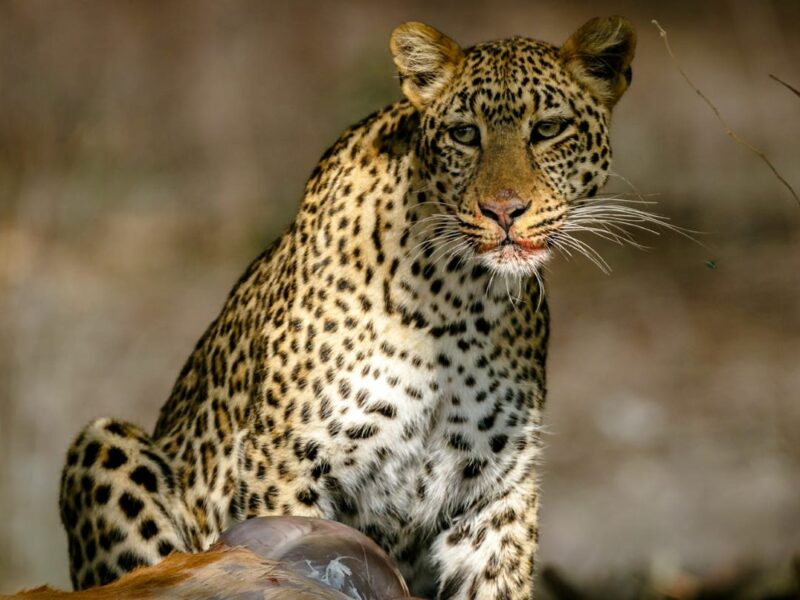
Equipment and Gear for Leopard Hunting
Selecting the right firearm and ammunition is critical for your leopard hunt. Leopards are known for their agility and strength, making it imperative to use a rifle with enough stopping power.
Firearm Specifications
A minimum caliber of .375 is essential for hunting leopards. This provides adequate power to penetrate deeply, ensuring a humane kill. A rifle chambered for this caliber should be fitted with a high-quality tactical scope for improved accuracy.
Bullet Type
Using a 300-grain bullet with an expanding tip is recommended. This type of bullet causes extensive tissue damage, making it more effective in bringing down the leopard swiftly. Remember, a wounded leopard becomes even more dangerous, so shot placement is crucial.
Essential Gear for a Successful Hunt
Besides the right firearm and ammunition, there are several pieces of gear that can make or break your safari experience.
Clothing and Footwear
Camouflage clothing is vital for blending into the natural environment, whether you’re navigating the Kalahari Desert or the lush Okavango Delta. Lightweight, breathable fabrics are ideal for the hot climates common in Africa. Sturdy, comfortable boots are a must for traversing rough terrains.
Safety and Communication Equipment
A good quality first-aid kit is non-negotiable. Injuries, no matter how minor, should be treated promptly to avoid complications. Communication devices such as satellite phones can be lifesavers if something goes wrong in remote areas.
Optics and Accessories
High-powered binoculars are essential for spotting leopards from a distance. A reliable rangefinder can help you accurately judge the distance to your target, improving shot accuracy.
For more tips and tricks on leopard hunting and to plan your next African hunting Safari, visit /.
Given these insights, you’ll be better prepared for your next African hunt. From selecting the right gear to understanding your target, every detail counts in making your Game Hunting Safari a resounding success.
Let’s dive into the exhilarating world of Game Hunting Safaris with a specific focus on leopard hunting. With the right preparation and knowledge, this adventure becomes not only achievable but also unforgettable. Here’s a step-by-step guide to ensure you’re ready for your next African hunting safari.
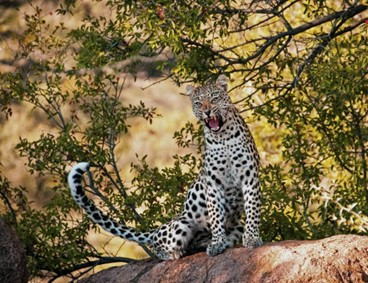
Essential Gear for Leopard Photography
When photographing leopards, having the right gear is crucial. We aim to help you capture those perfect shots by offering insights into the best equipment for this endeavor.
Camera and Lenses
Investing in a high-quality camera with fast shutter speeds is vital for leopard photography. Leopards are quick and elusive, often necessitating rapid captures. A DSLR or mirrorless camera with a frame rate of at least 8 frames per second (fps) is ideal. Examples include the Canon EOS R6 or the Sony A7III.
As for lenses, a telephoto lens with a focal length of 300mm or more is necessary to maintain a safe distance while shooting. For versatility, a 100-400mm zoom lens can be a good choice. Additionally, ensure your lens has optical image stabilization to reduce motion blur, especially in low-light conditions common during evenings or early mornings.
Clothing and Accessories
We recommend wearing neutral-colored clothing to blend into the environment when photographing leopards. Earth tones like brown, green, and khaki reduce your visibility and make it easier to get close without startling the animal. Opt for lightweight, breathable fabrics to stay comfortable in the African heat.
For accessories, pack a sturdy tripod to stabilize your camera during long waits. A bean bag can also be helpful for stabilizing the lens when shooting from a vehicle. Additionally, bring extra batteries and memory cards. Leopard encounters are unpredictable; being well-prepared ensures you won’t miss the perfect shot.
Safety Equipment
Safety can’t be overlooked. Carry a first-aid kit for minor injuries and ensure you have a reliable GPS device to avoid getting lost. Make sure to have a whistle or a signal mirror in case you need to alert others. Your safety is paramount while navigating the African wilderness.
Optics and Accessories
A good binocular is indispensable for spotting leopards from a distance. An 8×42 or 10×42 binocular offers a good balance between magnification and field of view. Ensure it’s lightweight and has a comfortable strap for easy carrying.
Embarking on a leopard hunting safari requires thorough preparation and high-quality gear. With the right equipment and proper precautions, you’ll be well on your way to capturing stunning images and experiencing the thrill of big game hunting. For more information, visit Game Hunting Safaris.
Conclusion
Leopard hunting in Botswana demands precision, ethical considerations, and the right gear. Understanding leopard anatomy and shot placement is crucial for a successful hunt. Equally important is selecting the right equipment, from firearms and bullets to clothing and safety gear. For those interested in photography, the right cameras and lenses are essential to capture stunning images. Thorough preparation and high-quality gear will ensure a memorable and successful African hunting safari. Let’s make every moment count and respect the majestic leopards we encounter.
Frequently Asked Questions
What is the importance of shot placement in leopard hunting in Botswana?
Shot placement is crucial in leopard hunting as it ensures a quick, humane kill. Precisely targeting vital organs minimizes animal suffering and increases hunting success rates. Understanding leopard anatomy is essential for effective shot placement.
What ethical considerations are involved in leopard hunting?
Ethical considerations include ensuring a humane kill, adhering to local laws and regulations, respecting wildlife conservation efforts, and maintaining fairness in the hunt. Ethical hunters strive to make responsible decisions and minimize animal suffering.
What essential gear is needed for leopard hunting?
Essential gear includes a suitable firearm with appropriate bullet types, durable clothing, reliable footwear, safety equipment like first aid kits, optics such as binoculars and scopes, and necessary accessories like tripods or gun rests.
Why is selecting the right gear important for leopard hunting?
Selecting the right gear ensures safety, improves hunting efficiency, and enhances the overall experience. Proper gear supports accurate shot placement, comfortable hunting conditions, and adherence to ethical standards during the safari.
What specific firearm specifications are recommended for leopard hunting?
Firearms with calibers such as .30-06 Springfield, .300 Winchester Magnum, or similar are recommended, as they offer the necessary power and accuracy for leopard hunting. Always consult with experienced hunters or guides for personalized advice.
What type of clothing and footwear is best for leopard hunting?
Durable, camouflage clothing that blends with the environment is ideal. Breathable, moisture-wicking fabrics are preferred. For footwear, opt for sturdy, comfortable boots designed for rough terrain, ensuring adequate support and protection.
What optics and accessories are vital for leopard hunting?
Vital optics and accessories include high-quality binoculars, a reliable rifle scope, and accessories like tripods or gun rests for stability. These tools help in spotting leopards from a distance and aid in accurate shot placement.
How can I prepare for a successful African hunting safari experience?
Thorough preparation includes researching the hunting area, understanding leopard behavior, honing shooting skills, assembling the right gear, and packing essentials like first aid kits and communication devices. Consulting experienced hunters or guides is also valuable.
What gear is essential for leopard photography during a hunting safari?
Essential gear for leopard photography includes a high-quality camera, versatile lenses (telephoto and wide angle), durable clothing, safety equipment, and optics like binoculars. Accessories like tripods and camera bags are also important.
Why is high-quality gear important for a memorable African hunting experience?
High-quality gear enhances safety, comfort, and efficiency, leading to a more successful and enjoyable experience. Reliable equipment ensures preparedness for various situations, contributing to a memorable and fulfilling hunting safari.
